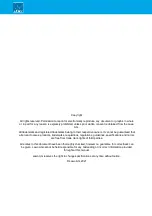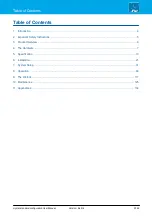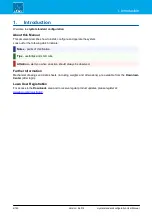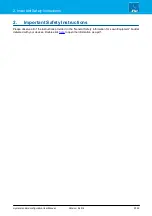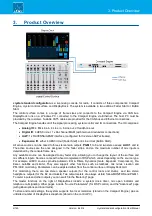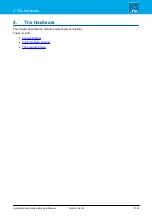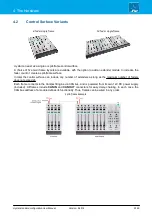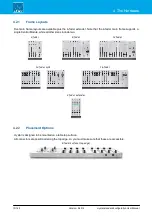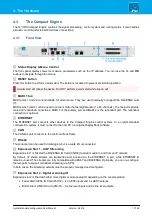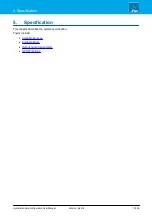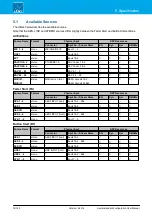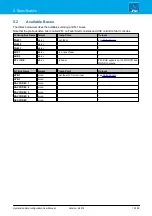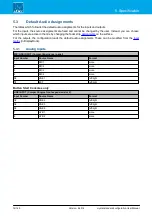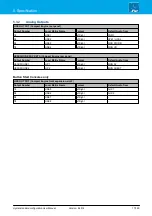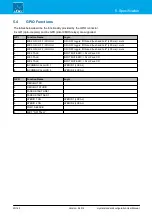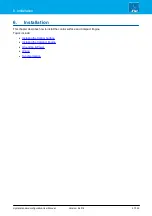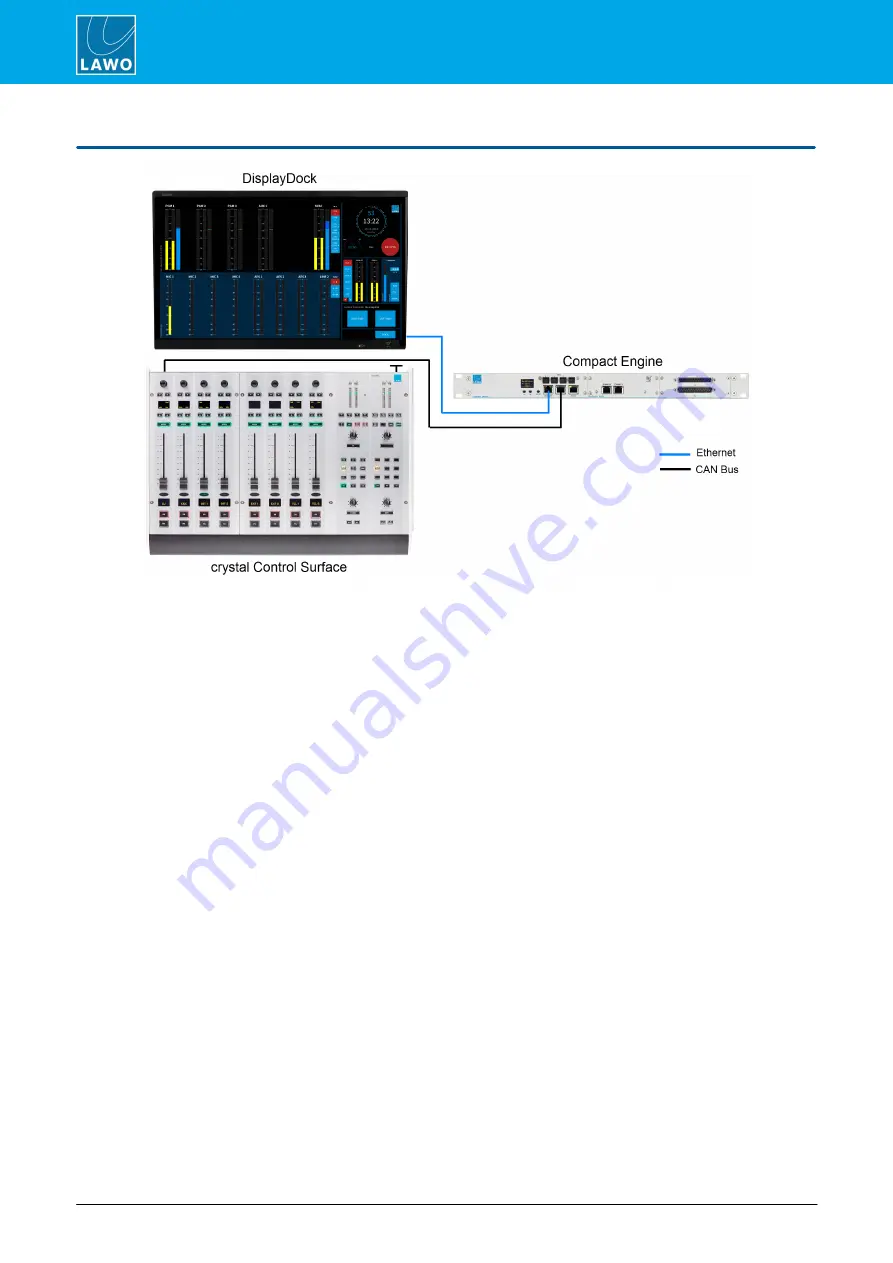
crystal standard configuration User Manual
Version: 6.4.0/4
6/149
3. Product Overview
3. Product Overview
crystal standard configuration
is a live mixing console for radio. It consists of three components: Compact
Engine, crystal control surface and DisplayDock. The system is available in two editions: Fader Start or Button
Start.
The control surface comes in a range of frame sizes and connects to the Compact Engine via CAN bus.
DisplayDock runs on a Windows PC connected to the Compact Engine via Ethernet. The host PC must be
provided by the customer. Suitable CAT5 cables are provided for the CAN bus and Ethernet connections.
The Compact Engine handles all of the signal processing, system control and IO connections. The IO comprises:
·
Analog IO
: 4 Mic/Line in, 4 Line in, 8 Line out, 2 Headphone out.
·
Digital IO
: 4 AES3 in/out, 1 x 64-channel MADI (with main and redundant connections).
·
AoIP
: 1 x RAVENNA/AES67 interface (configured for 32 stereo Rx/Tx streams).
·
Expansion IO
: either 4 AES3 in/out (Fader Start) or 8 Line in/out (Button Start).
All active sources can be mixed to three stereo main outputs:
PGM 1
to
3
and two stereo auxes:
AUX 1
and
2
.
The active sources are the ones assigned to the fader strips, and so the maximum number of mix inputs is
determined by the console frame size.
Any available source can be assigned to any fader strip, allowing you to change the layout of the surface and
mix different inputs. Sources come with a fixed complement of DSP which varies depending on the source type.
For example, all MIC sources provide AutoGain, EQ & Filters, Dynamics (Gate, Expander, Compressor), De-
Esser, AutoMix and Limiter. They also support other functions such as talkback, mix minus creation and
PFL/CUE monitoring. Parameters can be adjusted either from the control surface or DisplayDock GUI.
For monitoring, there are two stereo speaker outputs (for the control room and studio), and two stereo
headphone outputs (for the DJ and Guests).Two output meters are always visible: follow MONITOR and PGM 1.
To meter inputs and other outputs you can switch to the "Metering" page.
The master functions on the right of DisplayDock include a system clock, timer, mic open indicator and
telephone call signaling. Other pages include "Source Parameters" (for DSP control) and the "Advanced" page
(with global options and local matrix).
To store and recall settings, the system supports five local memories (stored on the Compact Engine) plus an
unlimited number of DisplayDock snapshots (stored on the control PC).


